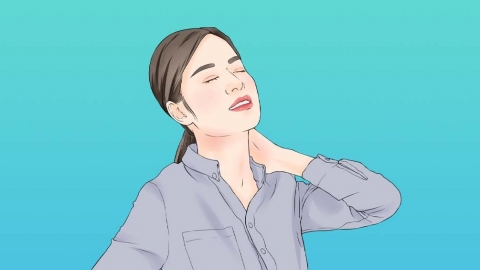How to manage a fatty lump on the back of the neck (often referred to as a "富贵包")?
Generally, a "富贵包" (fat pad) at the back of the neck may be associated with aging, poor posture, obesity, cervical spondylosis, and hyperthyroidism. Patients can manage the condition through increased physical activity, lifestyle adjustments, dietary control, and medication. It is recommended that patients seek timely medical consultation and follow professional medical advice for treatment. Detailed explanations are as follows:

1. Aging: With aging, skin elasticity decreases and the supporting capacity of fat and muscle tissues in the neck weakens, making it easier for fat to protrude forward and form a fat pad. Strengthening exercises, especially those targeting the back and neck muscles, can help tighten the skin and promote fat burning.
2. Poor Posture: Maintaining improper sitting or standing postures for prolonged periods, particularly looking down at mobile phones or computers, can cause neck muscle tension and contribute to the formation of a fat pad. It is important to improve work and lifestyle habits, regularly stretch the neck muscles, perform neck exercises, and apply heat therapy to promote blood circulation.
3. Obesity: Obesity can lead to fat accumulation throughout the body, including the neck area. When the subcutaneous fat layer thickens to a certain extent, a noticeable fat pad may form at the back of the neck. It is recommended to control diet, reduce intake of high-calorie foods, and increase consumption of light, easily digestible foods and fresh fruits and vegetables.
4. Cervical Spondylosis: Cervical spondylosis may cause changes in the physiological curvature of the cervical spine and lead to tension in the neck muscles and soft tissues, resulting in the formation of a fat pad. This may be accompanied by symptoms such as neck pain, stiffness, and numbness in the upper limbs. Patients should follow medical advice to use medications such as ibuprofen capsules, diclofenac sodium sustained-release tablets, or celecoxib capsules to relieve pain.
5. Hyperthyroidism: Hyperthyroidism increases the body's metabolic rate, accelerates metabolism of the neck muscles, and keeps them in a prolonged state of tension, promoting the formation of a fat pad. Symptoms may include palpitations, excessive sweating, and weight loss. Patients are advised to use medications such as lithium carbonate tablets, propylthiouracil tablets, or methimazole tablets under medical guidance to alleviate the condition.
During treatment, maintaining a positive mindset and healthy lifestyle is important. Regular stretching and strengthening exercises for the neck and back muscles should also be performed to promote overall muscular health.




